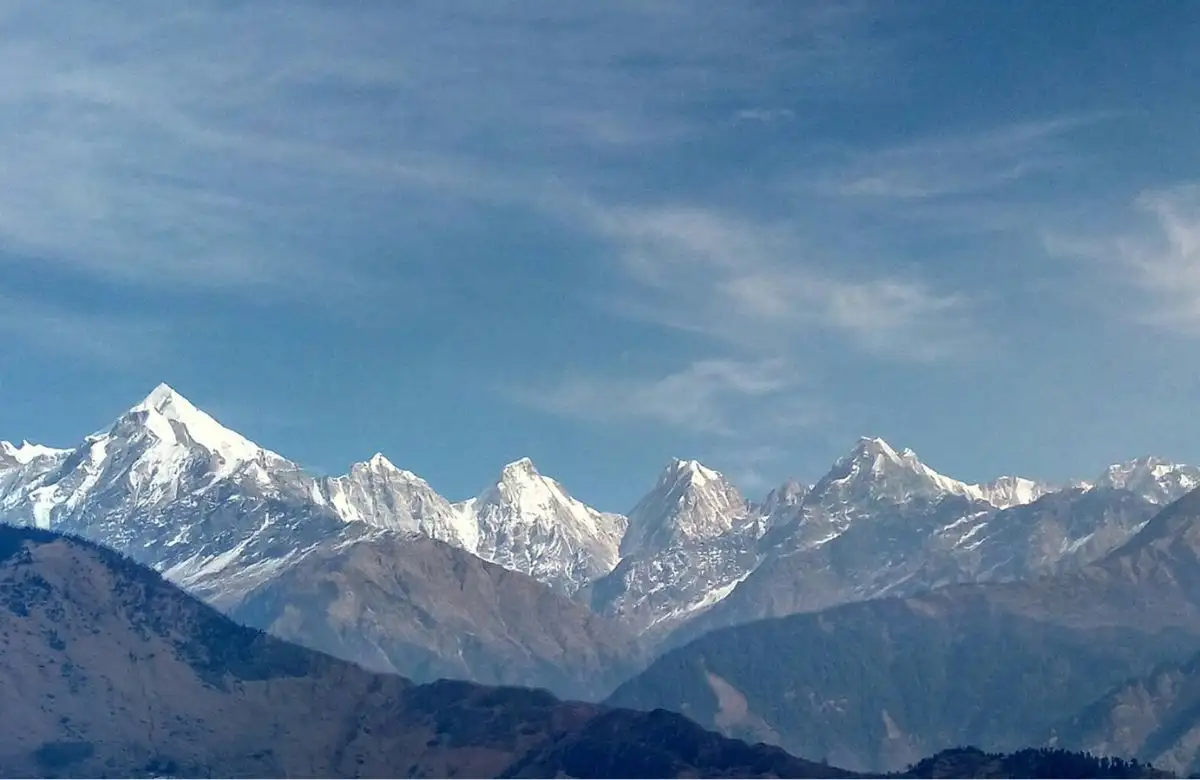The Spiritual Significance of Panchachuli Peaks, Uttarakhand

Get in touch with our Staff members and get discounted offers for your trip.


Where Mythology Meets Majesty in the Heart of the Himalayas
Towering majestically over the Darma Valley in the Pithoragarh district of Uttarakhand, the Panchachuli Peaks are a group of five snow-capped Himalayan summits that are not only visually stunning but deeply entrenched in Indian mythology and local spirituality. Rising to elevations between 6,334 meters and 6,904 meters, these five peaks captivate both trekkers and pilgrims alike.
But beyond their dramatic natural beauty, the Panchachuli Peaks are revered for their mythological and cultural significance, particularly in relation to the epic Mahabharata. These sacred summits are believed to represent the five Pandava brothers and are often linked to the Swargarohini Yatra, a symbolic journey to heaven. Let’s explore the many layers of spiritual meaning woven into the Panchachuli Peaks.
The name Panchachuli is derived from two Sanskrit words: Pancha (five) and Chuli (cooking hearths). According to legend, the five peaks represent the five Pandava brothers—Yudhishthira, Bhima, Arjuna, Nakula, and Sahadeva—from the Mahabharata. On their final journey toward the Himalayas in their quest to attain heaven, it is believed they stopped at this divine location to cook their last meal before embarking on the Swargarohini path—the stairway to heaven.
This narrative is so deeply rooted in local belief that the peaks themselves are seen as physical manifestations of the Pandavas’ devotion, valor, and spiritual journey.
In local lore, the Panchachuli range is considered the divine abode of Lord Shiva and Goddess Parvati. Just as Mount Kailash is associated with the supreme couple in Hinduism, Panchachuli serves as a more accessible yet equally sacred symbol of their eternal presence in the Himalayas. Locals often relate stories of divine sightings and blessings received near these peaks, especially in the spiritually charged environment of the Darma Valley.
The Swargarohini path, which literally means "the path to heaven," is a legendary trail that the Pandavas are said to have taken from the Himalayas into the heavens. Though the more commonly mentioned Swargarohini peaks are in the Uttarkashi region, the Panchachuli Peaks are also closely linked to this celestial journey, specifically as the site where the Pandavas prepared and ate their last earthly meal. This gives Panchachuli a revered status among devotees who view the range as a spiritual threshold between the earthly and the divine.
Among the indigenous communities of the Darma, Vyas, and Johar Valleys, Panchachuli is not merely a geographical formation; it is a living part of their cultural and spiritual identity. The peaks are venerated in daily prayers, seasonal festivals, and folklore passed down through generations. Many families consider the mountains as divine guardians who oversee and protect their lives and lands.
Though not as widely known as other pilgrimage sites, seasonal rituals and offerings are performed by local villagers at vantage points facing the Panchachuli peaks, especially during auspicious occasions and harvest festivals. Trekkers who visit are often welcomed with a deep sense of reverence by the locals, and many describe their journey as a spiritual pilgrimage rather than just a trek.
The spiritual appeal of the Panchachuli Peaks is perfectly complemented by the Panchachuli Glacier Trek, a moderate to challenging trekking route that starts from Dugtu or Dantu villages in the Darma Valley. Trekkers are treated to mesmerizing views of all five peaks, glacial streams, pine forests, and the soothing hospitality of local villagers.
For many, this trek is not just about adventure but about reconnecting with something greater. The stillness of the glaciers, the pristine alpine air, and the awe-inspiring views of the sacred Panchachuli can stir the soul in unexpected ways. Several travelers have described feeling an overwhelming sense of peace and spiritual presence as they approach the glacier base, especially at sunrise or sunset when the peaks glow golden.
Pithoragarh district, where the Panchachuli Peaks are located, also plays a pivotal role in the Kailash Mansarovar Yatra. Pilgrims heading towards Adi Kailash and Mount Kailash via the Lipulekh Pass pass through nearby towns such as Dharchula, Gunji, and Nabi Village.
In this spiritual geography, Panchachuli is seen as a sacred stop along the greater journey of enlightenment—a symbolic reminder of the Pandavas’ path and the eternal connection between the soul and the divine.
The Panchachuli Peaks are more than just an awe-inspiring natural wonder—they are a bridge between Himalayan wilderness and Hindu mythology, between adventure and ascension. For those who journey to this remote corner of Uttarakhand, the experience is as spiritual as it is scenic.
Whether you are a trekker, a seeker, or someone drawn to the deep stories of the land, standing in the shadow of Panchachuli is a moment of humble awe. These five majestic peaks stand not just as mountains, but as monuments to faith, courage, and transcendence.
Nearest Railway Station: Kathgodam (approx. 300 km)
Nearest Airport: Pantnagar (approx. 330 km)
By Road: Reach Dharchula, then drive or trek to Dugtu/Dantu villages in Darma Valley for the Panchachuli Base Camp Trek.